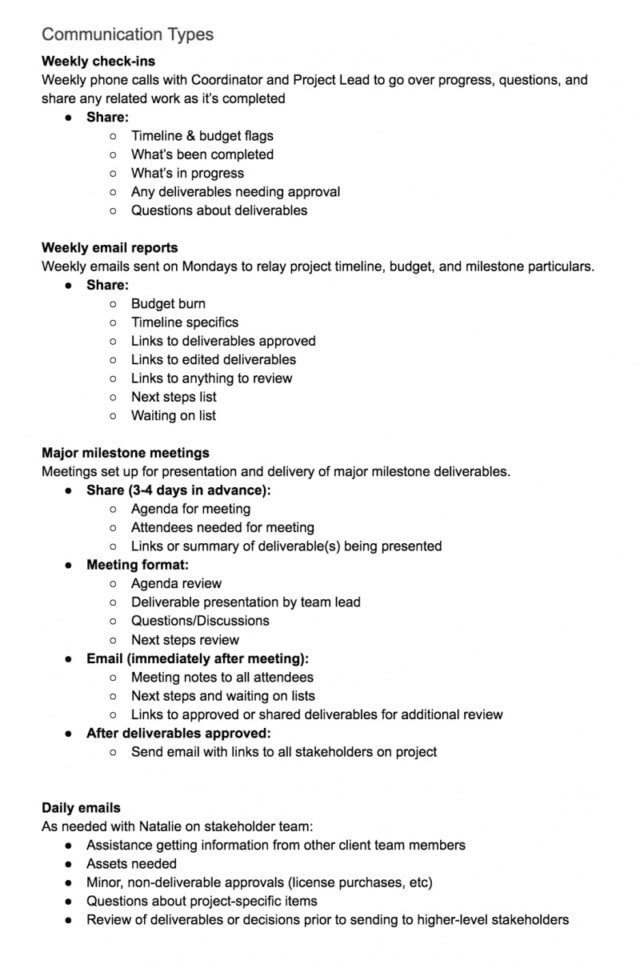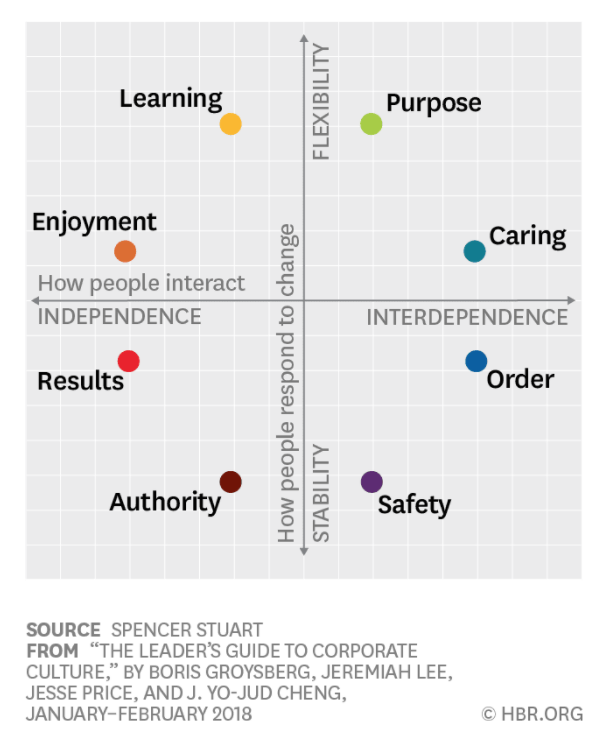“Culture eats strategy for breakfast” is a famous quote, attributed to Peter Drucker, that attests to the overarching nature of “culture” in organisational management. If strategy is a way to formalise company goals at a managerial level, culture is the typical set of values, beliefs and norms at a more practical level for enacting strategic goals. In fact, culture is the invisible force that drives people towards achieving company goals.
And as if the concept of company culture is already not vague enough, we’re struggling to understand its meaning for remote and semi-remote teams. What does it mean to have a strong company culture when you’re managing a remote team?
In this article, we’ll start by defining what company culture is, and then go on to offer some ways for building a strong company culture for your remote team.
What is “company culture”?
Like culture in any other social environment, company culture is an implicit collection of attitudes and behaviors shared among all members and with a significant impact on all areas and phenomena in a company. It defines what is accepted or rejected among people in the company.
A Harvard Business Review article identifies eight kinds of company cultures according to how they encourage interactions among people (independent vs. interdependent to each other) and how they respond to change (stable vs. flexible).
-
Caring
Caring focuses on relationships and mutual trust. Work environments are warm, collaborative, and welcoming places where people help and support one another. Employees are united by loyalty; leaders emphasize sincerity, teamwork, and positive relationships.
-
Purpose
Purpose is exemplified by idealism and altruism. Work environments are tolerant, compassionate places where people try to do good for the long-term future of the world. Employees are united by a focus on sustainability and global communities; leaders emphasise shared ideals and contribute to a greater cause.
-
Learning
Learning is characterised by exploration, expansiveness, and creativity. Work environments are inventive and open-minded places where people spark new ideas and explore alternatives. Employees are united by curiosity; leaders emphasise innovation, knowledge, and adventure.
-
Enjoyment
Enjoyment is expressed through fun and excitement. Work environments are lighthearted places where people tend to do what makes them happy. Employees are united by playfulness and stimulation; leaders emphasise spontaneity and a sense of humor.
-
Results
Results are characterised by achievement and winning. Work environments are outcome-oriented and merit-based places where people aspire to achieve top performance. Employees are united by a drive for capability and success; leaders emphasise goal accomplishment.
-
Authority
Authority is defined by strength, decisiveness, and boldness. Work environments are competitive places where people strive to gain personal advantage. Employees are united by strong control; leaders emphasise confidence and dominance.
-
Safety
Safety is defined by planning, caution, and preparedness. Work environments are predictable places where people are risk-conscious and think things through carefully. Employees are united by a desire to feel protected and anticipate change; leaders emphasise being realistic and planning ahead.
-
Order
Order is focused on respect, structure, and shared norms. Work environments are methodical places where people tend to play by the rules and want to fit in. Employees are united by cooperation; leaders emphasise shared procedures and time-honored customs.
Each of these cultures has characteristics that make them likely or unlikely to be found in an organisation at the same time. Cultures that are far from each other in the dependency/flexibility axes are unlikely to coexist in an organisation.
For example, you might find a culture both “purposeful” and “caring”. A company culture can encourage employees to align company activities towards a greater cause and at the same time collaborate with each other.
However, it’s unlikely that the cultures that are far from each other in the axes coexist in a company. For example, it’s unlikely for a company culture to be both purposeful and authoritative. Should the employees focus on serving a great cause, or try to gain personal advantages in a competitive work environment?
Company culture for a remote company
Does a remote company culture necessarily differ from an in-person company culture? Do you need to have a change of culture simply because you’re fully remote now?
Obviously as a new work dynamic, remote work brings some changes to how your company operates. The most important one is that employees are no longer under direct managerial control. They are given more autonomy to do their jobs as they consider fit. This has some serious effects on your company’s work culture.
Results-driven with a twist:
Naturally, in a remote work environment, the focus is more on the actual outputs produced by the team, rather than the hours filled. In a sense, a remote company culture is more or less “results-driven”.
If your in-person work environment was characterised by employees’ visible busyness (occupying a space in the office, attending meetings, filling work hours, etc.) rather than the actual results produced, there will be a lot of confusion for your employees when they go remote. Plus, not all roles can be determined this way! For instance, a sales manager who’s in several meetings every day may seem busier than your shopify developer who’s programming your entire website.
Based on the eight company culture models introduced above, a results-driven culture encourages “achievement and winning” and is “merit-based”, a kind of culture that rewards personal success.
However, when it comes to remote work, “results-driven” loses its self-serving imprint. It’s true that employees are given more autonomy to do their job almost independently, but all the personally-produced outcomes should be coordinated with each other, like puzzle pieces, to serve a bigger purpose.
What to do to encourage a results-driven culture?
Be clear on responsibilities:
The first step would be to let your employees know that you’re shifting to a results-driven culture. Hold a meeting and explain in clear terms what you mean by a results-driven culture, what you’re hoping to achieve from it, and what you expect your employees to do. Encourage employees to express their concerns and opinions freely and help them understand the process.
Have a system to manage team projects:
It’s easier to assign responsibilities to team members and manage individual contributions if you have a project management system or methodology. At its core, a project management methodology helps you in the processes of planning, executing, monitoring, and closing a team project.
A project management tool enables you to assign responsibilities and resources, create and manage workflows, hold meetings and communicate freely with team members, share files, track time, etc. Using an employee scheduling software you can keep track of your team members’ work hours and tasks.
Scrum is an agile project management methodology that focuses on completing projects incrementally and iteratively. That is each project is divided into several sub-projects or increments (called Sprints) with their own requirements. Before each Sprint begins, the team and stakeholders hold a meeting to discuss requirements and expectations. After the responsibilities are assigned and a tentative outline is made, the team starts working on the increment. Each team member does their own specific job almost independently from each other. But they hold several meetings (including a 30-minute daily meeting) to make sure individual outcomes contribute to the team’s end goal. The team repeats this process for each increment until the project is complete.
As a flexible project management methodology, Scrum seems to be the right fit for managing a remote team. Scrum software tools allow you to schedule your daily Scrum meeting, build boards for prioritising tasks, develop sprint goals, help your team become self-organising, and so on.
Trust and caring:
If a remote work culture encourages a results-driven perspective to work, it does so in the light of teamwork and cooperation. Individual contributions are useful only if other team members can apply and expand them.
Trust plays an important role in a results-driven work culture due to the lack of employees’ physical presence in the workplace. Some managers would find it hard to trust employees to do their job right when they don’t have them under surveillance.
Cal Newport explains in a NewYorker article that a true transition from an in-person work environment to a remote one happens when “you change the very definition of “work” itself, moving it away from surveillance and visible busyness, and toward defined outcomes and trust.”
How to encourage trust and care in a remote team?
Encourage purposeful communication:
In an attempt to reassert their lost surveillance and control over their employees, some managers might emphasise an excessive number of meetings. They might believe that frequent communication increases its effectiveness.
The problem with this idea is that in a remote work culture, communication is more effortful. One could argue that human beings are not hardwired for the excessive amount of remote communication, and might find it exacting over time. A widespread phenomenon among remote workers called Zoom fatigue is the result of frequent video calls.
Instead of pressing your employees to keep in touch all the time, you should find ways to make communication purposeful and effective. Design a communication plan for your employees and explain what you exactly expect from them when it comes to communication.
As Dmytro Okunyev, the founder of Chanty, explains, “there’s no agreed-upon etiquette in the teams which were forced to go remote and this is something that should be addressed. If you have driving rules, why not develop a set of rules for remote team communication? These rules will add clarity to any team.”
In a communication plan, you need to define what should be communicated to who, and how and when it should be communicated. Here’s a sample of a communication plan explaining communication types and their goals during a project.

Make a list of people involved in the project along with their contact information. Make sure people understand the goals for communication and what they should deliver. You should also define communication methods (phone, text, video, email, etc.) and how often it should be done.
Avoid micromanaging:
Managers’ mistrust with their employees might show itself in the form of micromanagement. They’re typically not satisfied with their employees’ work and rarely show appreciation, frequently demand their employees to report their progress, have unreasonable expectations regarding employees’ working hours and their results, and generally try to control all aspects of work.
Needless to say, micromanaging increases stress among employees and overtime leads to burnout, stifled creativity, decreased productivity, and even health issues. Micromanagement in a remote work culture is in fact the recipe for a toxic work environment. The success of a remote work environment depends on empowering employees and giving them autonomy rather than micromanaging them.
Keep in mind that your team members should not be under so much stress that it affects their home life and sleep. There is a connection between good decision-making and proper sleep, so if you want the best from your team, you need to ensure that they are able to leave their work at home and not worry about what awaits them when they ‘clock in’ the next day.
Brian Minick, the COO of ZeroBounce explains: “trust is the number one value that we share. I manage remote teams across the U.S. and Europe, and if I didn’t trust everyone, we wouldn’t be able to work together. Luckily, our employees are independent and driven people, so we don’t need to micromanage them. We all work for the same goals and no matter where we are in the world, this always keeps us pushing forward”.
Innovative and learning:
In the same article that Cal Newport talked about the importance of defined outcomes and trust in a remote work culture, he points out the importance of “training” as a decisive factor when shifting to a remote culture.
Following the example of a successful program for promoting results-only work environments (ROWE) in organisations, he states that there is only one consistent explanation for its success: “training, lots and lots of training. This switch toward autonomous, outcome-focussed work was not accomplished with an e-mailed announcement of a new policy or the purchase of a new collaboration tool”.
The organisation that successfully implemented the program on its remote team and saw amasing results, WATT Global Media, had asked the ROWE practitioners to run intensive training around the core tenets of the program.
Even after the initial training, they continued to train their employees at different levels:
“To support the new culture, Watt put in place an onboarding program for every new hire, including asking them to read a book that Ressler and Thompson wrote about rowe, to bring these employees up to speed on the company’s unusual approach to work. Watt also instituted regular training sessions with his managers, held on the second Tuesday of every month. They rotate who facilitates each session, which is structured as a combination of a formal curriculum and an open discussion, aimed at keeping the team in the proper results-focussed mind-set.They’ve been holding these meetings for close to a decade now. Watt intuited that the pull of the simpler, traditional approach to work was strong, requiring a constant application of energy to resist.”
You need to rely on online tools for training your remote team. Online employee engagement tools can help you evaluate your employees’ performance and design training programs for them. It’s also a good idea to provide hands-on resources for your employees to take advantage of at their own discretion. FlippingBook’s Page Flip tool allows you to create beautiful interactive PDF books that could be shared with your employees.
Finally:
A remote company culture should have three main characteristics to be efficient:
- It should be results driven. Team members need to have autonomy to work more independently, but all the personally-produced outcomes should be coordinated with each other, like puzzle pieces, to serve a bigger purpose.
- It should be caring and based on mutual trust. Managers should trust employees with their work preferences. Employees should know how to communicate efficiently and coordinate their independent outcomes to serve a bigger purpose.
- It should be innovative. Employees need to be trained on different aspects of a remote work culture. Managers should try innovative methods and systems to find out what will propel the team to produce better results.
To build a strong company culture, managers should find ways to instil these characteristics in their workforce. Being clear on team members’ responsibilities, having a project management system to manage projects, encouraging purposeful communication by designing a communication plan, avoiding micromanagement, and providing employee training programs are some of the ways to do so.
Originally published Jan 24, 2022, updated Jan 16, 2023

